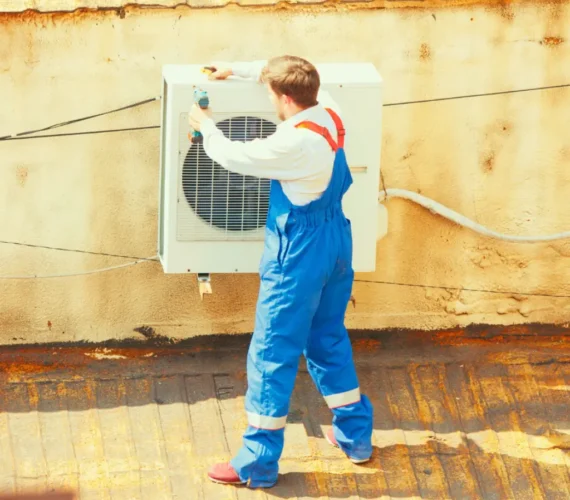
Air conditioning systems are essential for maintaining comfort in residential, commercial, and industrial spaces. When they malfunction, it disrupts your daily life. Proper air conditioning repair not only restores functionality but also ensures energy efficiency and longevity. This comprehensive guide will walk you through everything you need to know about diagnosing, repairing, and maintaining your air conditioning system.
Understanding Common Air Conditioning Issues
1. Lack of Cooling Efficiency
One of the most frequent complaints is inadequate cooling. This issue often stems from:
- Dirty or clogged air filters.
- Low refrigerant levels.
- Faulty compressors.
2. Strange Noises
Unusual sounds like grinding, squealing, or banging can indicate:
- Loose components.
- Motor issues.
- Malfunctioning fans or belts.
3. Leaking Refrigerant
Refrigerant leaks not only reduce cooling capacity but can also harm the environment. Symptoms include:
- Ice formation on the evaporator coil.
- Decreased cooling performance.
- Hissing or bubbling sounds.
4. Electrical Failures
Circuit breakers tripping repeatedly or the system failing to turn on can result from:
- Faulty wiring.
- Overloaded circuits.
- Failing capacitors or relays.
Step-by-Step Air Conditioning Repair Process
1. Initial Diagnosis
The first step in repairing your air conditioning system is identifying the root cause of the problem:
- Visual Inspection: Check for obvious signs like ice buildup, leaks, or disconnected wires.
- Testing Components: Use a multimeter to test electrical continuity and ensure proper voltage flow.
2. Cleaning and Maintenance
Regular cleaning can solve many performance issues:
- Replace Filters: Dirty filters restrict airflow. Replace them every 1-3 months.
- Clean Coils: Dust and debris reduce the efficiency of evaporator and condenser coils.
- Clear Drain Lines: Blocked drain lines can cause water to back up and damage the system.
3. Refrigerant Management
If refrigerant levels are low, inspect for leaks:
- Locate Leaks: Use a leak detector or UV dye to identify the source.
- Seal and Recharge: Repair the leaks and recharge the system with the appropriate refrigerant.
4. Component Repairs and Replacements
For damaged or worn-out parts:
- Replace Faulty Capacitors: Capacitors help start the motors. Replace them if they are swollen or leaking.
- Repair Compressors: Check for wiring issues or replace the compressor if it has failed.
- Fix Fans and Belts: Tighten or replace loose or damaged fan blades and belts.
Preventive Maintenance Tips
1. Schedule Regular Inspections
Hire professionals to inspect your air conditioning system annually. They will identify potential problems before they escalate.
2. Keep the Unit Clean
- Outdoor Unit: Remove leaves, dirt, and debris around the outdoor condenser.
- Indoor Unit: Regularly dust vents and ensure unobstructed airflow.
3. Check Thermostat Settings
Ensure the thermostat is calibrated correctly and set to an optimal temperature.
4. Monitor Energy Usage
An unusual increase in energy bills can indicate a problem. Promptly investigate and address any inconsistencies.
When to Call a Professional
While some minor repairs and maintenance tasks can be performed by homeowners, certain issues require expert intervention:
- Complex Electrical Problems: Avoid DIY fixes for wiring or capacitor replacements.
- Major Component Failures: Compressor or motor replacements should be handled by certified technicians.
- Refrigerant Handling: Always leave refrigerant charging and leak repairs to professionals.
Benefits of Timely Air Conditioning Repairs
- Enhanced Energy Efficiency: A well-maintained system consumes less energy, reducing your utility bills.
- Extended Lifespan: Addressing problems early prevents further damage, ensuring the longevity of your unit.
- Improved Air Quality: Clean filters and coils contribute to healthier indoor air.
- Consistent Comfort: Timely repairs ensure uninterrupted cooling and heating performance.
Conclusion
Repairing and maintaining your air conditioning system is crucial for ensuring its optimal performance and extending its lifespan. By following the steps outlined above, you can tackle common issues, maintain efficiency, and avoid costly repairs. Always prioritize safety and seek professional assistance for complex repairs.
